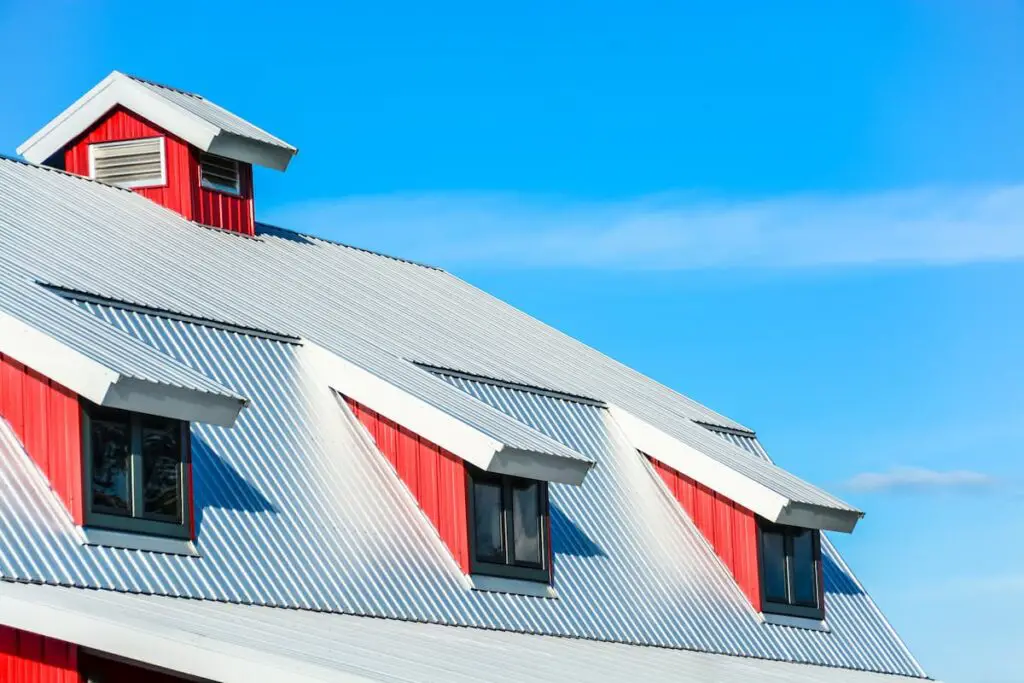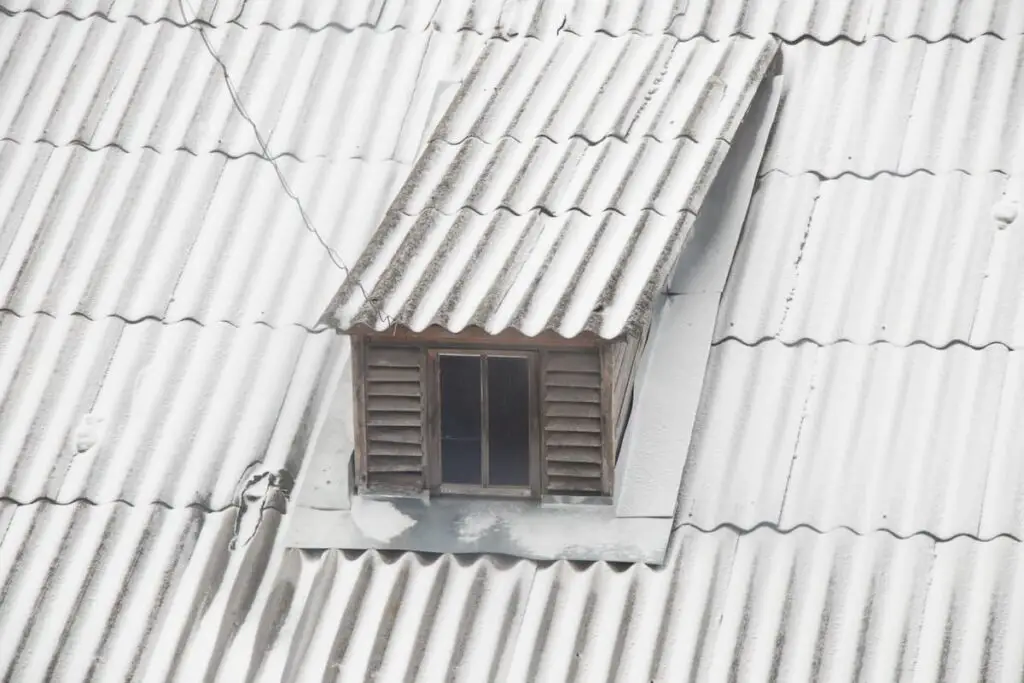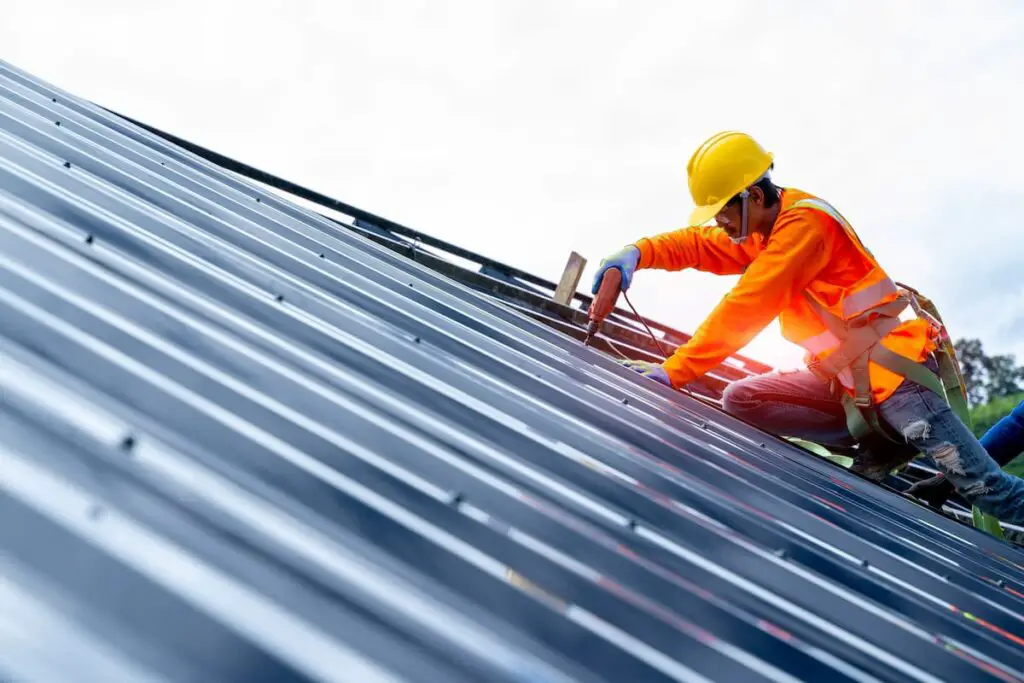As an Amazon Associate, we earn from qualifying purchases. We may also earn commissions if you purchase products from other retailers after clicking on a link from our site.
If your roof was damaged recently, and you are looking to replace some or all of it, a roofer might suggest that you have it replaced with a metal roof. But is that a good idea? Can a metal roof withstand high winds?
Wind can damage a metal roof, but it will sustain less damage than other roofing systems. They can withstand high winds, protect a home from water damage, and are more durable. Although they have a high investment cost, they will pay for themselves over the long run.
Metal roofs are fast becoming the preferred roofing system in areas subject to hurricane-force winds. In this article, you will learn why that is and the added benefits of these roofing systems.

1. Metal Roofs Can Withstand High Winds
When it comes to keeping up to withstand high winds, metal roofs are superior to other roof systems. As a result, metal roofs are often used in areas prone to hurricanes because the roofs can withstand gusts of 150 mph (241.4 kph).
Roofs need to withstand wind uplift, which happens when the air pressure going under a roof system is higher than the air pressure above it. Keep in mind that a roof system is more than the surface materials.
Fasteners, as well as other components, need to hold the roof on the house.
When the wind blows across the surface of a roof, the air pressure over the roof drops, creating negative pressure. The wind that goes under the roof and enters cracks and other openings creates positive pressure.
As wind gusts and dies down, the push and pull of positive and negative pressure can loosen roofing materials. Therefore, metal roofs must be secured correctly. Wind uplift does the most significant damage to roof overhangs, corners, eaves, and ridges.
To evaluate wind resistance, metal roofing materials are submitted to uplift tests, which are done by a procedure known as the bag test.
Here’s how it works:
- Plastic bagging is installed between the metal and roof decking.
- Air is pumped into the plastic bags to measure how much pressure is needed to disengage the panel from the decking.
Of course, building height can affect wind speed.
In addition, geographical locations and surrounding terrain also play a role in the wind’s impact, and the number and size of openings in a building all affect wind uplift.
2. Metal Roofs Protect Your Home From Water Damage
Every year, snow could potentially damage your home’s roof. Ice dams on asphalt shingle, for example, can lead to water damage in the attic or walls of your house. However, metal roofs rarely have that problem.

Ice dams are created on shingle roofs because ice pushes melting water up shingles, and once water is under the shingles, it soaks into the roof’s decking.
Since metal roofs don’t have shingles, water leaks cannot easily occur.
Missing, cracked, or broken asphalt shingles can cause water damage. As they age, shingles lose the granules, which causes them to become brittle, which becomes another potential cause of entry point for water. Asphalt shingles are simply more vulnerable to water damage.
3. Metal Roofs Are Durable
Metal roofs come with 50-year warranties because they are so durable. They are more resistant to impact, and coated metal makes the roofs practically rust-free.
Metal roofs are more resistant to impact than most roofing systems.
For example, while hail damage is a common issue with asphalt shingle roofs, metal roofs typically suffer only minor dings. Therefore, if you live in an area that frequently gets hailstorms, metal roofs can save you money.
In addition, they will save you the hassle of filing insurance claims.
Corrosion resistance is another feature of high-quality metal roofing. The Kynar coating on metal and standing seam aluminum roofs protects them from the elements.
4. They Have a High Initial Investment Cost
Metal roofs can cost up to 2 or 3 times as much as other types of roofing.
Although a metal roof has a longer lifespan, you should consider whether the investment would be worth it. For example, metal roofs typically come with warranties that range from 30 to 50 years, but if you don’t plan to live in the house for more than a few years, it might not be a good investment.
However, a metal roof might increase the value of a home. Since home prices are tied to the value of similar houses, you might not be able to recoup your investment. A real estate agent could advise you on that.
But, if you were to put a metal roof on your home, and you were to list it for sale soon after, that would be a huge selling point for many people, as they wouldn’t have that added expense after buying your house.
5. Metal Roofs Need To Be Properly Installed
Improper installation can negate the benefits of metal roofs and cause damage to your home in the form of water damage. While a metal roof is being installed, there are some circumstances you and the installer should be aware of.

Proper Roof Slope
Asking the installer about roof slope is an excellent way to determine if they have much experience installing metal roofs.
The slope of a metal roof should be a minimum of 4” (10.16 cm) per foot. This is commonly written as 4/12, or 4” (10.16 cm) over 12” (30.48 cm). If the slope is less than that, especially less than 3/12, there is a greater chance of a leak.
Simply put, metal roofing is not a good choice for flatter roofs because of the design of the seams.
Missing Or Improperly Installed Flashing Or Secured Panels
If the necessary flashing is not installed around chimneys, skylights, and against walls and roof valleys, leaks can happen.
Also, the metal panels on a metal roof are designed to form a barrier that keeps water out. However, if one of the panels isn’t correctly attached to the roof, water can come in through a gap.
And if the fasteners are too loose, too tight, or not straight, the panel is not adequately fastened.
6. A Metal Roof Is Environmentally Friendly
Metal roofs can be manufactured from recycled materials, which is one reason they are environmentally friendly. In addition, they don’t need to be replaced as frequently as shingles, which is another environmental benefit.
Here are a few more reasons why a metal roof is environmentally friendly:
- Safety: If lightning strikes them, metal roofs will not catch on fire.
- Energy-efficient: Metal roofs might lower the cost of cooling by 10% to 25% because they reflect the sun’s heat, unlike asphalt shingles.
- Environmentally responsible: Metal roofs can have anywhere from 25% to 95% recycled material. More importantly, most are 100% recyclable. On the other hand, shingles are rarely recycled, and the trash adds up to an annual 20 billion lbs (over 9 billion kg).
7. Metal Roofs Do Have Some Disadvantages
Along with the aforementioned higher costs, metal roofs have a few disadvantages. Most of these disadvantages are aesthetic in nature, but since the metal often outlasts the fasteners, they should be inspected every few years.
Here are a few of the most common disadvantages of metal roofs:
- Noisy: Metal roofs can be louder during a rainstorm or hail storm. This problem can be solved with additional attic insulation, but that increases the cost of the roof. However, those with metal roofs often report that they don’t notice an increase in noise from storms.
- Color mismatching: If you need to repair a roof or plan to add to the house, it may be challenging to obtain a color that will match the existing metal.
- Problems with fasteners: As they warm and cool, the metal roofing material will expand and contract. The fasteners also expand and contract, but they usually have shorter lifespans. Washers and screws used during installation may deteriorate and get loosened over time. This all means that metal roofs need to be inspected every few years.
Bottom Line
Nothing is perfect, not even metal roofs. However, if you live in a high-wind area of the country, an investment in these roofs can pay for itself, especially if parts of your shingle roof are torn off, and your home receives water damage.
